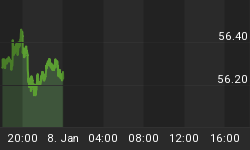Question #1: Is there a group of investors that "control the direction" of the stock market?
The answer is yes, and they are a group that own over half of all the stocks. They are not HFTs (High Frequency Traders), and they hold the stocksfor appreciation for their underlying customer base.
Who are they? They are classified as "Institutional Investors". Due to the clout they have in the market, you always want to be trading in the same direction they are trading in and never against them.
How do you know what direction Institutional Traders are trading in?
They are only 4 different possibilities they can exhibit and they are:
-
In Accumulation with Accumulation in an up trend. (Increasing Accumulation and Buying ... this is when you want to be buying.)
-
In Accumulation with Accumulation in a down trend. (Decreasing Accumulation and/or profit taking ... since Institutional Investors are decreasing their exposure, it would be good to do the same.)
-
In Distribution with Distribution in a down trend. (Increased Selling while aggressively decreasing exposure in holdings ... here is where you want to move to cash (or possibly go short if the market is in a down trend).
-
In Distribution with Distribution in an up trend. (Selling, but decreasing the rate of selling which could shift to Accumulation if the trend continues ... here is where you want to get your shopping list together and be ready to buy if the trending is getting close to Accumulation.)
Where can one find this kind of information?
Obviously, this is very important information, which is why we post the data in these chart Sections for our subscribers each day:
-
The chart showing daily Institutional Buying and Selling amounts can be found in Section 4 as Chart number 6. (This chart show's the individual daily levels of Institutional Buying and Selling amounts.)
-
The chart showing the daily Institutional "Net" of Buying and Selling can be found in Section 4 as Chart number 7. (This chart answers whether Institutional Investors are in Accumulation or Distribution, and what the direction of the trending is.)
What is the second most Important Question that investors should be asking?
This question will be identified and answered on Monday, so please come back and join us then when we will:
-
Discuss why it is a very important key to today's market, and ...
-
Discuss why those nasty negative divergences "never kick in" until after this indicator starts to down trend or go into Contraction.
So, please join us on Monday when we have this important discussion.
















